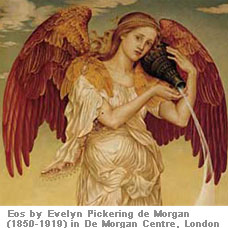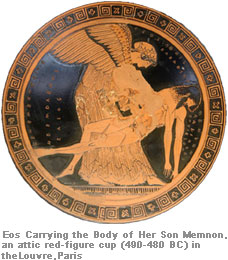INTRODUCTION
Second language (L2) learning involves a gradual advancement from the learner’s first language (L1) towards the target language (TL). During this process of learning, the learner naturally develops an intermediate language between his L1 and L2. It is neither L1 nor L2, rather a separate language having its own grammar or linguistic system. This learner system is widely referred to as Interlanguage (IL). The emergence of Interlanguage evinced the shift in psychological perspectives of second language learning from a behaviourist approach to a mentalist one. In fact, the concept of Interlanguage, in many ways, borrowed some of its major assumptions directly from the mentalist theories. This psycholinguistic concept was first introduced by the well-known SLA theorist Larry Selinker (1969, 1972). Since then, Interlanguage has become a major subject of scrutiny in the field of second language learning theories. Although Selinker was the chief begetter of the theory, subsequently, a few other theorists came forward to explain the same notion under different terms, such as Approximative System (Nemser 1971), Transitional Competence (Corder 1967), and Idiosyncratic Dialect (Corder 1973).DEFINITION
In a general sense, Interlanguage is defined as the interim grammars constructed by the learner of a second language on his way to the target language.In a narrower sense, Interlanguage refers to the intermediate status of the second language learner’s system between his mother tongue and the target language.
In a broader sense, Interlanguage is defined as the second language learner’s present knowledge of the language he is learning.
THEORETICAL ASSUMPTIONS
The core assumptions underlying Interlanguage are as follows:
• Second language learning is a gradual progression form L1/NL/MT towards the L2/TL/FL.
• At every stage of learning the learner develops a system of rules that is neither the system of L1/NL/MT nor the system of L2/TL/FL, but instead falls between the two.
• The process of learning consists of rule formation or hypothesis-testing.
• The mistakes made by the learner are a natural procedure of language learning.
• There is a psychological structure latent in the brain, which is activated when one attempts to learn a second language.
• Many learners do not achieve the full L2/TL/FL competence.
DISCUSSION
Here follows a detailed discussion on Interlanguage theory based on the assumptions mentioned hereinabove:INTERLANGUAGE CONTINUUM
During L2 acquisition, the learner formulates the hypotheses about the system/rules of TL. The rules are viewed as mental grammars that construct the Interlanguage system. These grammars are permeable. They are exposed to influences both from outside the learner and form the learner’s internal processing. This suggests that the learner’s performance is variable. These grammars are transitional. The learner changes his grammar from one time to another by adding rules, deleting rules, and restructuring the whole system. Thus, in every stage of learning, there is an Interlanguage. Through the gradual process of checking and rechecking hypotheses, the learner keeps changing his Interlanguage until the target language system is fully acquired/ shaped. This gradual progression naturally implies to an Interlanguage Continuum.The above figure suggests that Interlanguage is a dynamic phenomenon which can be illustrated with a continuum, of which one end is L1 and the other end is L2. The learner constantly moves along the Interlanguage continuum of which the destination is the complete mastery of the TL.
LANGUAGE DEVICES
Interlanguage can proceed by adopting two types of mechanisms:
1. L1 Mechanisms: L2 learners can utilize the same mechanisms as L1 learners adopt during language acquisition:
(a) Universal Grammar (UG): This device is postulated by Avram Noam Chomsky (1959). Chomsky asserts that there are certain principles that all possible natural human languages have. These principles are biologically determined and specialized for language learning.
(b) Latent Language Structure: This device is a counterpart to UG. It was proposed by Eric Heinz Lenneberg (1967), a contemporary of Chomsky. The proponent assumes that the child’s brain has an innate propensity for language acquisition and that this propensity is lost as maturation takes place.
Originally, both the theories were associated with L1 acquisition. Their principles were adopted by the second language researchers in order to provide explanations for the existence of developmental sequences in Interlanguage and to view L2 acquisition as a natural process.
2. Alternative Mechanisms: L2 learner can use other mechanisms too:
(a) Latent Psychological Structure: This device is postulated by Larry Selinker. He argues that 5% of L2 learners attain mastery in their TL by using the Latent Language Structure. On the other hand, 95% of L2 learners achieve competence in their TL by using the Latent Psychological Structure. The Latent psychological Structure is different from that of the Latent Language Structure with respect to the following facts:
(i) It has no direct genetic time table (i.e. not subject to a critical period)
(ii) It has no direct connection with any grammatical concept (e.g. Universal Grammar)
(iii) It has no guarantee of activation or realization into particular grammar structures of the L2.
(iv) Although this device is considered independent, possible overlapping may occur between this structure and other areas of the brain.
Within the Latent Psychological Structure there exist several important notions:
1. Fossilization
Selinker recognized Fossilization as an important mechanism of the Latent Psychological Structure. He assumes that many learners will not achieve the total mastery of L2, but will stop somewhere in the middle with their language still affected by errors. Fossilization can take place at any stage of the learning process, even at a very early age. According to him, out of all the L2 learners, only 5% of them are thoroughly successful as to be able to reach the end of the Interlanguage Continuum. And when the learners stop progressing any further, their Interlanguage is said to have fossilized. However, the successful learner doesn’t fossilize, rather constantly moves along the Interlanguage continuum.
2. Psycholinguistic Processes
Selinker points out five psycholinguistic processes which determine the fossilized forms:
i) Overgeneralization: fossilization due to the use of an L2 rule in contexts where it is not required.
ii) Transfer of Training: fossilization due to certain features found in the instruction via which the learner is taught the second language.
iii) Strategies of Second Language Learning: fossilization due to some approach to the learning of L2 material adopted by the learner.
iv) Strategies of Second Language Communication: fossilization due to some approach used by the learner when communicating with L2 native speakers.
v) Language Transfer: fossilization due to L1 influence.
The above processes can be visualized through a diagram in the following way:
LEARNING/TEACHING METHOD
From the above discussion, it is apparent that the interpretation of Interlanguage is partially undertaken by investigating and interpreting the errors produced by the L2 learner. Hence, Error Analysis (EA) has become a prevailing learning method in Interlanguage development. The notion of EA was proposed by Pit Corder (1967).STRENGTHS
The theory of Interlanguage is significant for a number of reasons:
1. The study of Interlanguage is systematic and universal by nature. Like the Innate Theory of L1 acquisition, Interlanguage theory considers the learner as an active participator, since he is capable of constructing rules from the data he encounters.
2. The study of Interlanguage can help to determine what the learner already knows at a certain point of time and what he has to be taught when and how in a particular second language teaching programme.
3. The concept of Interlanguage has liberated language teaching methods. It has paved the way for the Communicative Teaching Approach. Since errors are considered a natural part of the learning process, teachers now tend to use teaching activities which do not require constant supervision of the learner‘s language. Consequently, group work and pair work has become a suitable means for language learning these days.
WEAKNESSES
Despite many positive sides, some of the assumptions of Interlanguage have been criticized for their weaknesses:
1. A major Interlanguage criticism relates to its limited explanatory power. The theory assumes that the linguistic stage that a learner is at can be predicted by analyzing his errors. However, Error Analysis as a mode of inquiry is limited in its scope as it concentrates on what the learner did wrong rather than on what made him successful. It is often impossible to identify the unitary source of an error.
2. Error Analysis gives the learner base for improvements of his Interlanguage rules. But researches confirm that too much correction can lead to a lack of motivation and thereby leading many correct utterances unnoticed. Thus the learner needs to be restricted to important errors only.
3. The theories of Interlanguage cannot determine how the exact position of the learner in between L1 and L2 will be interpreted.
CONCLUSION
Interlanguage is, by far the strongest contender amongst the second language learning theories. The theory of Interlanguage was the first major attempt to explain the process of second language learning in terms of mentalist perspectives. After its introduction by Selinker, it has been gradually developed by the hands of numerous researchers. At this time, it has become much refined and also contributed a lot in developing many other theories. Although vague in many points, it has been able to provide significant suggestions for the theories of second language learning.References
Crystal, David. A Dictionary of Linguistics and Phonetics. 6th ed. Oxford: Blackwell, 2008“Error Analysis.” Glottopedia. 2011. Glottopedia. 2 September 2011
< http://www.glottopedia.de/index.php/Error_analysis >
Ellis, R. Second language acquisition. Oxford: OUP, 1997.
“Interlanguage.” Urs Dürmüller. 2011. Urs Dürmüller. 2 September 2011
<http://duermueller.tripod.com/interlanguage.html>.
“Interlanguage.” Wikipedia. 2011. Wikimedia Foundation, Inc. 2 September 2011
<http://en.wikipedia.org/wiki/interlanguage>.
“Interlanguage.” Sciaga.pl. 1998-2011. Sciaga.pl. 2 September 2011
< http://www.sciaga.pl>.
Richards, J. C. , ed. Error Analysis: Perspectives on Second Language Acquisition.
Essex: Longman, 1992. 31-54.
Spolsky, B. Conditions for Second Language Learning. Oxford: OUP, 1989.
Yule, George. The Study of Language. 2nd ed. Cambridge: CUP, 1996. 95
NB: This article has also been published in the Journal of Language and Culture, Vol. 4. No. 2, November 2013




















